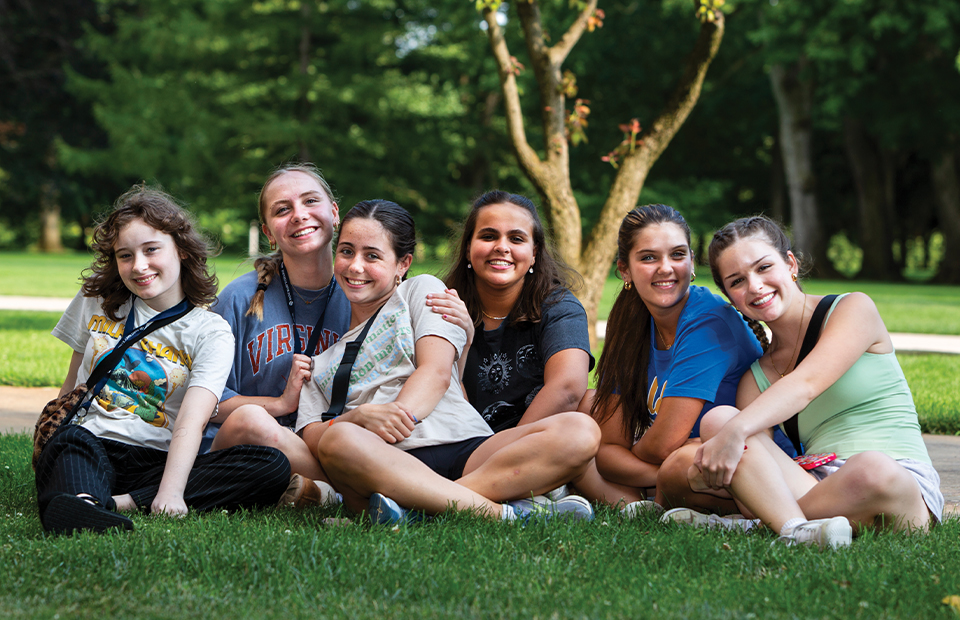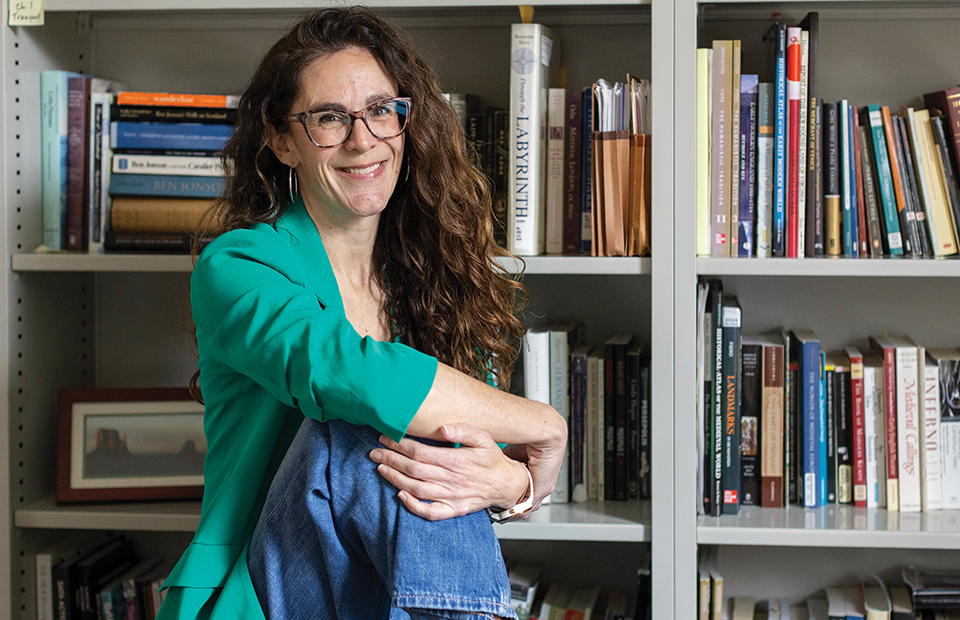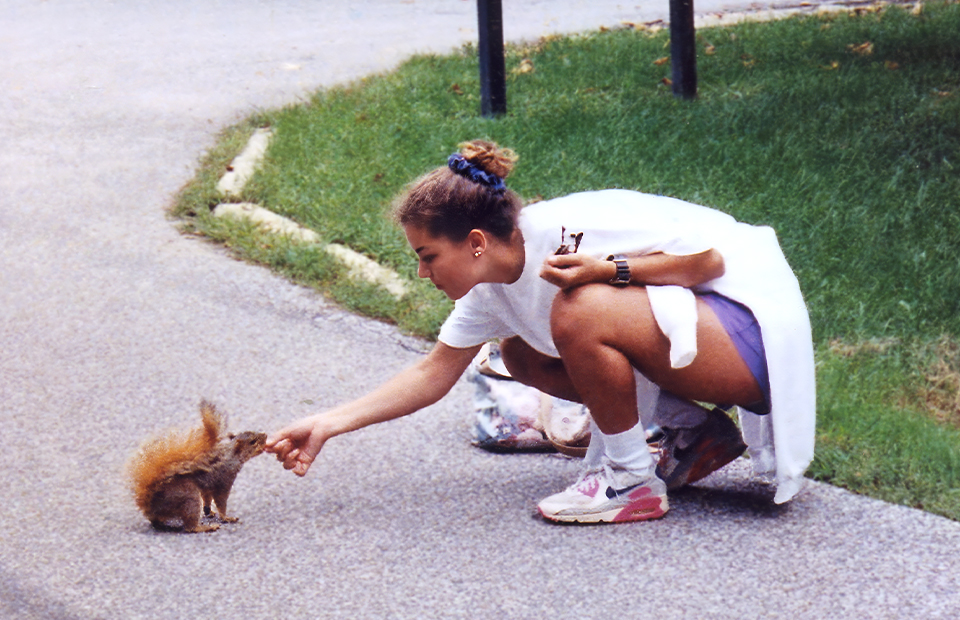The Art of Mercy at Home at Saint Mary’s
Saint Mary's Stories

Several years ago, five remarkable works of religious art—all of them sculptures—were installed on the Saint Mary’s campus.
Each work has a three-tiered provenance. Most immediately, they all arrived on campus on a generous long-term loan arranged by Mary Burke ’85, a proud and loyal alumna and chair of the Board of Trustees from 2010 to 2019. They came through Burke’s hands from their previous home at Mercy Hospital in Chicago. Founded in 1852 by the Sisters of Mercy, it was the city’s first chartered hospital and in 1859 became the first Catholic hospital in the United States to partner with a medical school. As it evolved and expanded, the hospital had various locations in greater Chicago, most recently on the South Side.
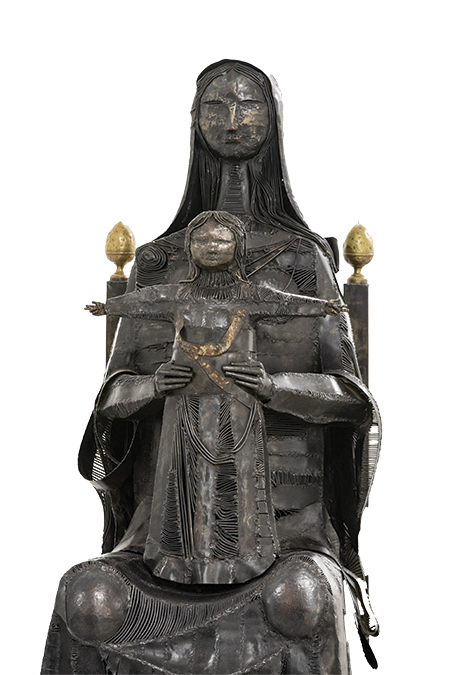
In June of 2021, Mercy Hospital was acquired by a clinical technology company, Insight Chicago, and was renamed Insight Hospital & Medical Center. As it assumed its new secular identity, the Sisters of Mercy looked for a new home for some of the artwork that had graced the hospital’s public spaces. Having served on the Hospital’s Board of Trustees for 12 years (alongside Chair Susan Glockner Gallagher ’80), Burke immediately thought of her beloved alma mater. Recalling how she felt that the pieces “would open our eyes in a new way,” she recently reflected on how “God’s image in the world comes to us through music, through nature, through art ... through people.”
Four of the pieces are the work of Nassio Bayarri de Valencia. Born Ignacio Bayarri Lluch in 1932 in Valencia, Spain, he was a prolific painter and a celebrated sculptor. Known in the world of art simply as Nassio, he died in January 2023.
Two of his pieces are housed in the Cushwa-Leighton Library. Mounted on the back wall of the main reading room on the first floor, “Trees of Life” (1968) embeds in three flattened iron trees a series of colorful mosaic tiles depicting nine scenes from scripture. In an artist’s note, Nassio explained the vision behind this work of art: “the world is God’s, with people and history living within it.” A study space on the third floor of the library houses an altogether different sort of piece, a stunning larger-than-life bronze titled “Christ Figure” (1984) that once stood in the Medical Staff entrance to Mercy Hospital. The label to it invites the viewer to see in its open palms the compassion, the power, and the wisdom of Christ’s healing.
The foyer of Regina Hall showcases an even larger iron sculpture titled “Madonna and Child” (1968). An artistic expression of faith on a grand scale, this piece draws the viewer toward the bond between young Christ and His Mother. Intriguingly, this towering, three-dimensional work interprets an iconic painting, blessed by Pope Leo XIII in 1894, that hangs in the chapel of the Sisters of Mercy motherhouse in Dublin. Formerly located in the lobby of Mercy Hospital, the sculpture’s placement in the building that houses the Department of Nursing Science at Saint Mary’s is especially apt given Nassio’s original intention that it would greet “visitors and patients with the idea of a mother offering her care and love, and that of her son, our Lord.”
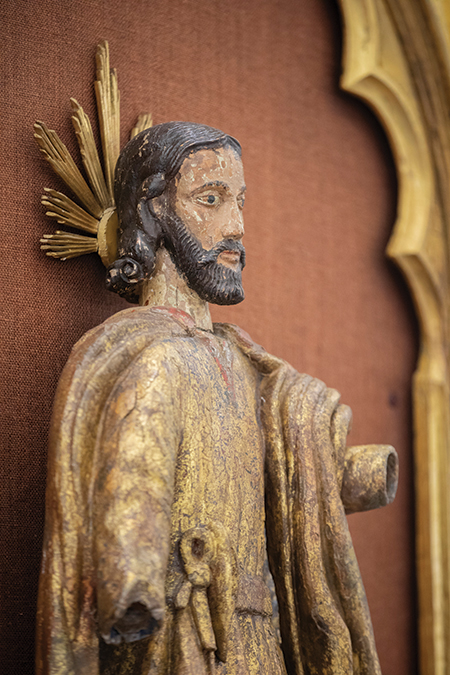
Installed in the lower level of the Student Center, the fourth of Nassio’s sculptures on campus, “People of God” (1967), is carved in mezzo-relievo from a single large slab of almost translucent marble. The artist’s personal note on this work, included in The Art of Mercy, a book published by Mercy Hospital & Medical Center in 2014, is a beautiful complement to the piece itself. Affirming that the five haloed figures represent five saints, Nassio observes: “It is paradoxical—its subject is people, yet the lack of features moves you to a spiritual plane. The ‘People of God’ symbolically represents people’s interdependence on each other in their search for meaning, wholeness and God.” The life-size scale of these humanoid forms indeed invites the viewer to identify intimately with their spiritual aura and essence.
The fifth sculpture from Mercy Hospital that is now at home at Saint Mary’s is probably Spanish as well but predates Nassio’s work by almost two centuries. Carved from wood and dating to the late 18th or early 19th century, it is a fascinating example of a “Christ Santo” (santo being the Spanish word for “saint” and, by extension, for a religious statue). It is also a stunning example of the art of polychrome (multi-colored) decoration. An x-radiograph would probably reveal that this figure was carved in sections, the limbs and the head and other protruding elements then attached to the body using a delicate combination of animal glue and tiny nails. The fact that the figure’s hands are missing is telltale in this regard: they would have been attached via a tenon inserted into the conspicuous mortise in each of the forearms.
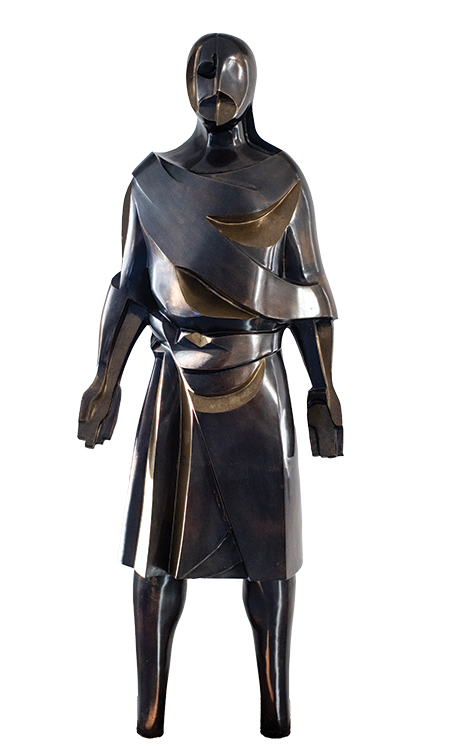
As with so much religious sculpture in this genre, this “Christ Santo” most likely was produced not by a lone artist laboring in a studio but by a consortium of anonymous artisans with distinct tasks and distinct skills. While a single sculptor would have managed the overall project, some of the details—the hands, for instance, or the radiating halo behind the figure’s head—would have been assigned to others in a workshop setting. Likewise, after the application of a whitewash primer, the painting of the sculpture would have been delegated to specialists to add flesh tones to the exposed body parts and to apply in layers further coloring and gilding to the robe and the drapery.
On display now in the main reading room of the Cushwa-Leighton Library, this wonderful work of many talented makers was probably commissioned either for a chapel or for a prayer alcove in a private residence. In its new home, it continues to resonate with the same power as Nassio’s sculptures. The dedication in the book The Art of Mercy thanks the Sisters of Mercy for “their awe-inspiring vision to incorporate the value of art through the healing process.” At Saint Mary’s College, that vision extends to the learning process as well.
See more photos of the artwork here.
June 1, 2024

